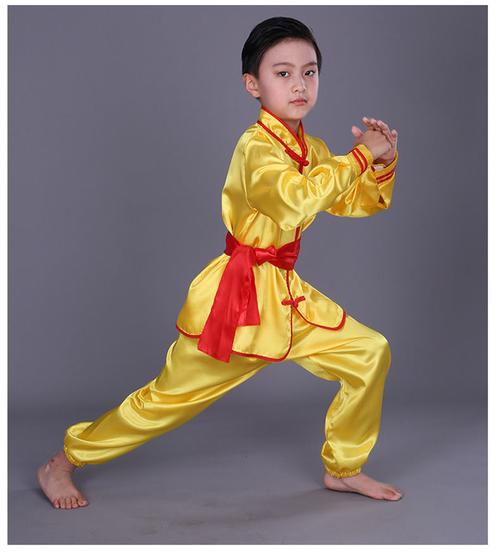儿童武术服装练功服
- 经验
- 2024-05-14
- 247
Title: Choosing the Right Martial Arts Clothing for Children
In the realm of martial arts, selecting appropriate attire is not merely about fashion but also about functionality, comfort, and safety. When it comes to children practicing martial arts, these considerations become even more crucial. Proper attire can enhance performance, prevent injuries, and foster a sense of discipline and respect for the art. Let's delve into the essentials of choosing the right martial arts clothing for children.
Understanding the Basics
Before delving into specific clothing options, it's essential to understand the fundamental requirements for martial arts attire:
1.
Comfort
: Clothing should allow for a wide range of movement without hindrance or discomfort.2.
Durability
: Martial arts can be physically demanding, so garments need to withstand rigorous training sessions and frequent washing.3.
Safety
: Loose or overly baggy clothing can pose a risk during training, leading to tripping or entanglement. Additionally, the attire should offer some degree of padding or protection.4.
Respect for Tradition
: Many martial arts styles have traditional uniforms that hold symbolic significance. Respecting these traditions can be an essential aspect of martial arts training.Common Options for Children's Martial Arts Clothing

1.
Gi (Uniform)
:*Description*: The traditional martial arts uniform typically consists of a jacket, pants, and a belt (obi). They are commonly worn in styles like karate, judo, and taekwondo.
*Material*: Gis are often made from durable cotton or a cottonpolyester blend, offering breathability and resilience.
*Fit*: Ensure the gi fits well, neither too tight nor too loose. A good fit allows for unrestricted movement while maintaining modesty.
*Color*: Different martial arts disciplines may have specific color conventions for belts, representing the practitioner's rank and progress.
2.
Sparring Gear
:*Description*: For styles involving contact or sparring, protective gear such as headgear, gloves, shin guards, and mouthguards are essential to ensure safety during training and competitions.
*Quality*: Invest in highquality gear that provides adequate protection without compromising mobility. Look for items with proper padding and secure fastenings.
3.
Compression Wear
:*Description*: Compression shirts and pants are tightfitting garments that can be worn under the uniform for added comfort and muscle support.
*Benefits*: Compression wear can help regulate body temperature, reduce muscle fatigue, and provide additional support during training sessions.
4.
Footwear
:*Description*: While many martial arts are practiced barefoot, some disciplines, such as kung fu or karate, may require specialized footwear like kung fu slippers or karate shoes.
*Functionality*: The footwear should provide grip and traction while allowing for natural foot movement. Avoid shoes with excessive padding or bulky soles.
Tips for Parents and Instructors
1.
Prioritize Safety
: Ensure that children wear appropriate protective gear during training to minimize the risk of injuries.2.
Check Regulations
: Different martial arts schools and organizations may have specific dress codes or regulations regarding attire. Familiarize yourself with these guidelines to ensure compliance.3.
Quality Over Quantity
: Invest in a few highquality pieces of martial arts clothing rather than opting for cheaper, lowerquality alternatives. Quality attire tends to be more durable and provides better performance.4.
Proper Maintenance
: Teach children the importance of caring for their martial arts clothing, including regular washing and proper storage to prolong its lifespan.Conclusion
Selecting the right martial arts clothing for children involves considering factors such as comfort, durability, safety, and tradition. Whether it's a traditional gi, protective sparring gear, or compression wear, prioritizing quality and functionality will ensure that children can train effectively and safely while respecting the traditions of their chosen martial art. By providing children with appropriate attire, parents and instructors can support their martial arts journey and help them develop discipline, respect, and a passion for the art.
上一篇
绣花图案苗族服装图片
下一篇
宏极太极服旗舰店